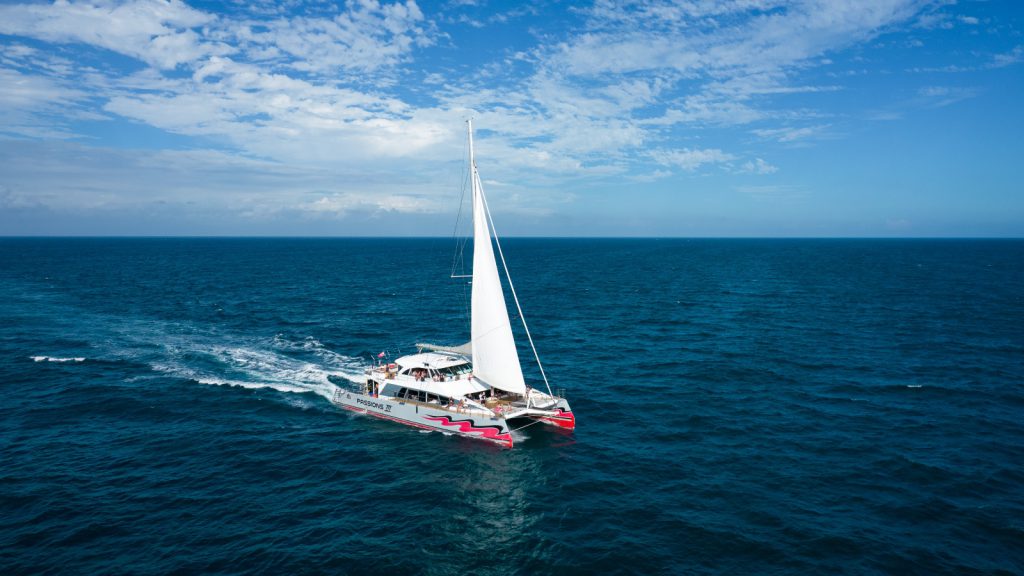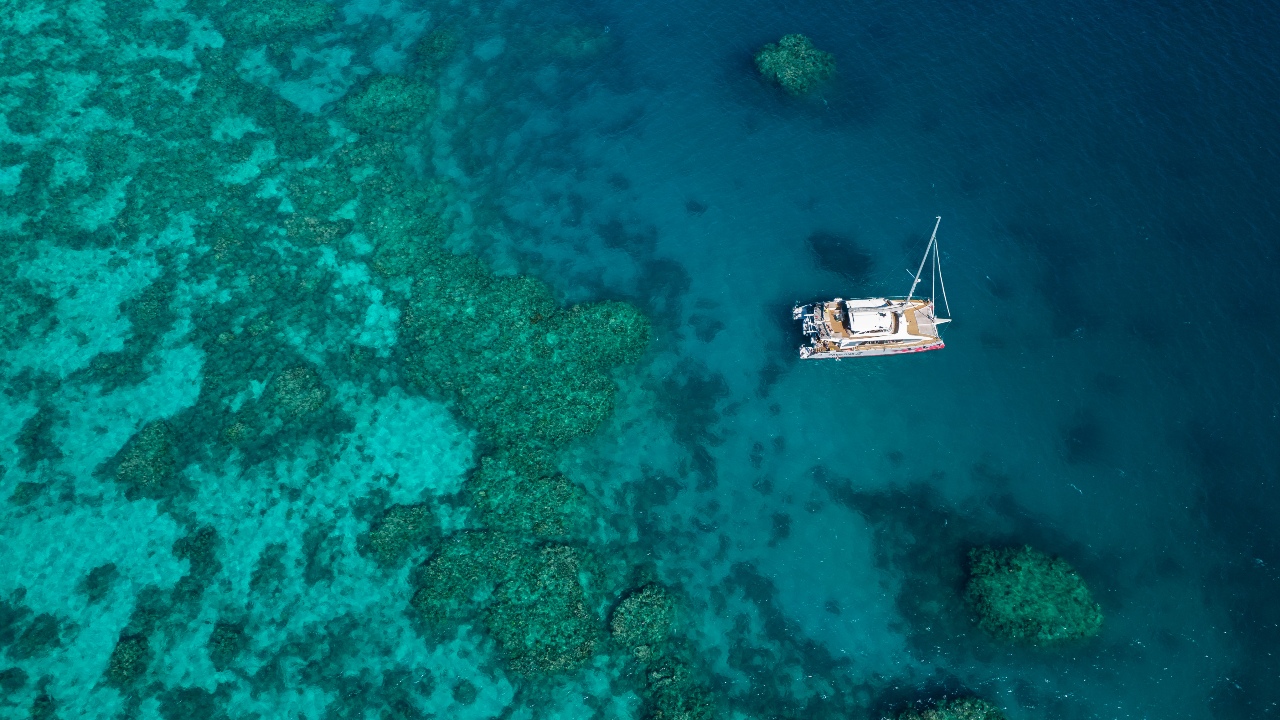Flat on my back and with my eyes shut, I’m drifting gently along a stretch of the Mossman River in Tropical North Queensland on an inflatable river sled. In my ears, above the sound of rushing water, is a symphony of birdsong, the fluttering of azure-blue Ulysses butterflies, and the whirs and chirps of insects—all part of the ecosystem of the surrounding Daintree Rainforest.
I needn’t worry about crocodiles: the river is too clear and chilly for those cold-blooded reptiles (the water fluctuates between 16 and 22 degrees centigrade), leaving me at peace to enjoy this river drift snorkelling adventure. Over the course of two hours, I’ve ducked under the water to peek at eels, emerald cling gobies and freshwater pipefish, and watched a saw-shell turtle clamber onto a damp log, and briefly shot the Mossman River’s rapids.
It’s worth mentioning that part of this tour involves trekking through the rainforest in a full neoprene wetsuit—a feat I previously assumed was impossible to do without perspiring and expiring. But the Daintree Rainforest remains a hospitably temperate environment in the cooler months of autumn and winter, one of its many surprises. As part of the Wet Tropics World Heritage Area, which holds Australia’s greatest diversity of animals and plants within a mere 0.26 per cent of the continent, the Daintree is estimated to be at least 135 million years old.

“Now we’re coming to a part of the tour we like to call The Cathedral,” the guide from Back Country Bliss announces. I open my eyes to find a vaulted ceiling of arching raintree branches laden with giant bird’s-nest ferns, all sculpted entirely by nature—a sight that, even if you’re used to the jungles of Malaysia, is undeniably captivating. Keen to soak up more of the Daintree Rainforest’s beauty, I check-in to Silky Oaks Lodge, a resort under Baillie Lodges, which boasts a collection of remarkable luxury lodges in unique wilderness destinations.
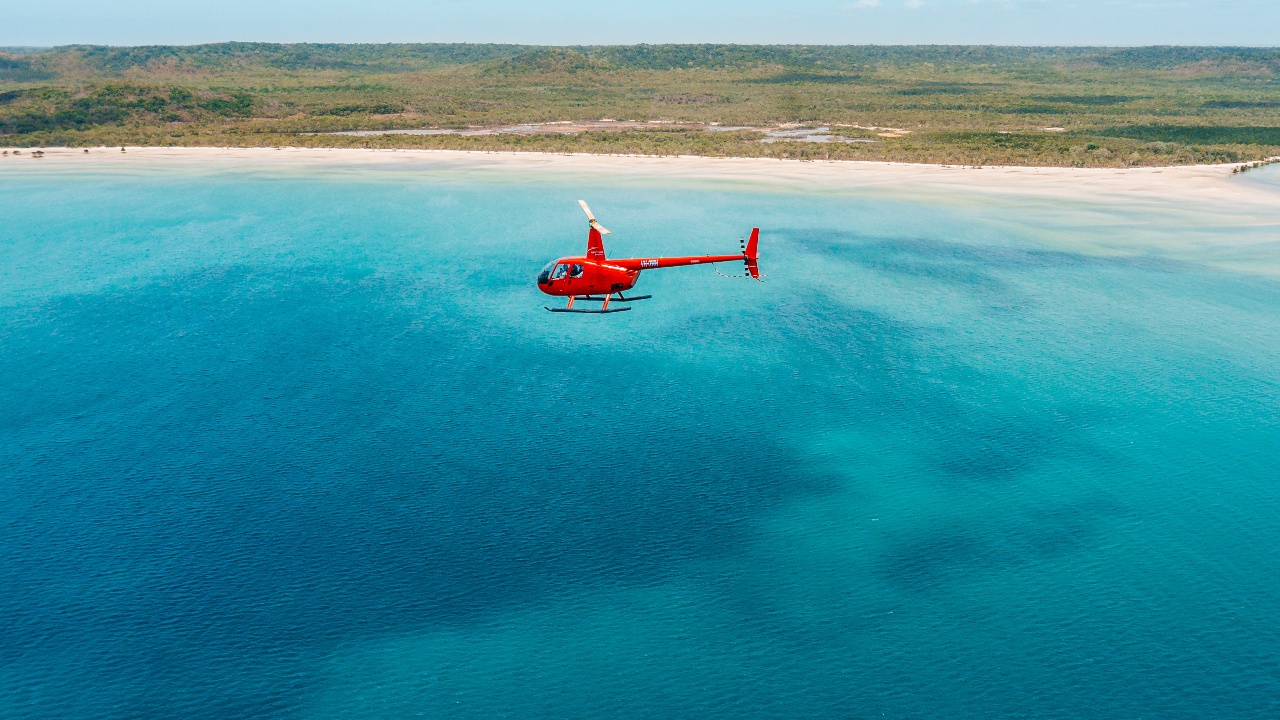
Set just 80 minutes’ drive northwards from Cairns Airport, the resort spans 32 hectares, across which stands a main lodge, 40 treehouse-style suites, a rock-framed swimming pool, a spa offering phenomenally relaxing Healing Waters Massages, and The Treehouse Restaurant. Here, rainforest living is the furthest thing away from a gruelling survival test: the enormous Daintree Pavilion (from AU$5,400 per night) has two bedroom wings, an infinity-edge pool, and an open-air atrium lounge with a fully stocked bar. A cosier Treehouse Retreat (from AU$1,620 per night) ups the romance, encouraging languid soaks in the stone bathtub on its private deck and snuggling time on the verandah’s string hammock.
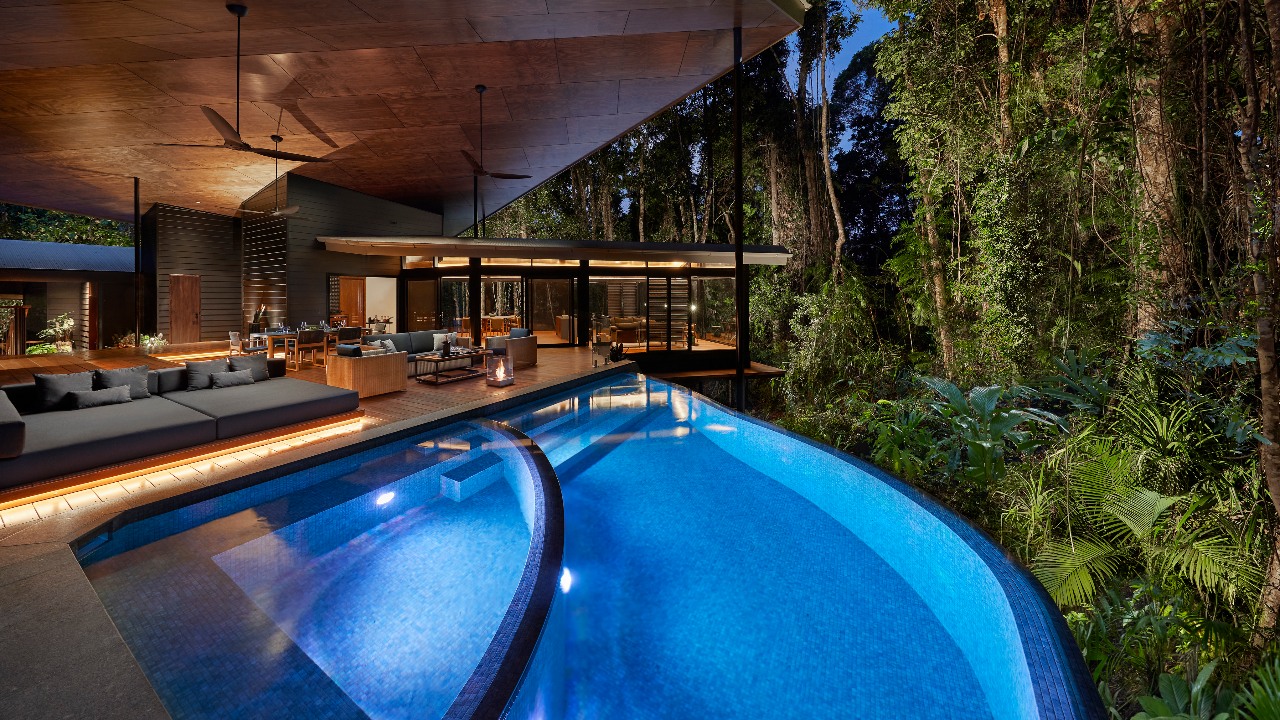
It’s impossible not to be drawn in by the enigmatic charms of the Daintree, which plays host to 3,000 plant species including centuries-old cycads and magnificent king ferns reputed to be the largest in the world. An Aboriginal cultural tour with Juan Walker, the owner of Walkabout Cultural Adventures, brings a unique First Nations perspective to an exploration of the region—the land of the Kuku Yalanji people—highlighting their remarkable care and respect for country. Spear-throwing, an introduction to Aboriginal medicines and food, and poetically narrated Dreamtime Stories of the land, sea and sky are just a sliver of Walker’s intimate knowledge of his country and culture.
For travellers driven solely by their voracious appetites, Brett’s Outback Tasting Adventures—a private driving tour that starts from the nearby town of Port Douglas and runs through the fertile Atherton Tablelands—provides a memorable edible overview of the region’s sensational fresh produce. Spicy local peanuts supplied by independent grocery store The Humpy, moreish Gallo Dairyland cheeses, award-winning spirits from Mount Uncle Distillery, and morsels of crocodile are some of the delicacies I encounter, along with chance sightings of elusive platypuses (which, of course, remain uneaten).
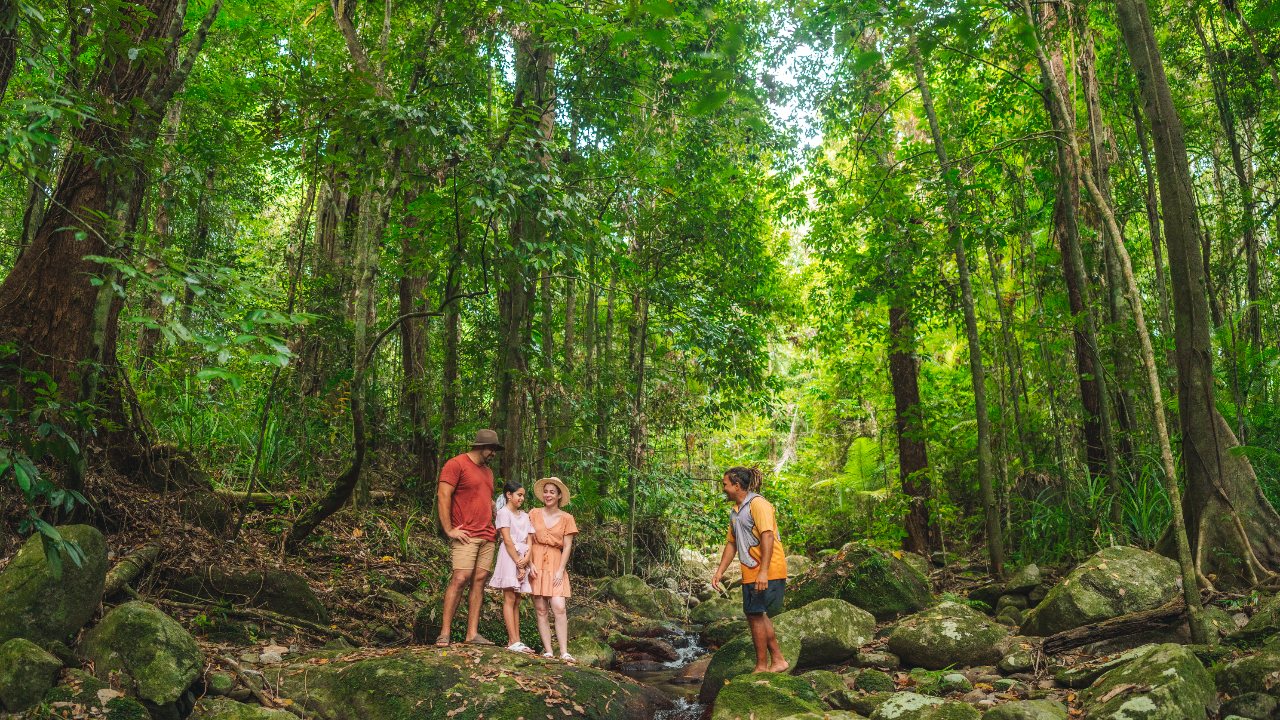
Both tours afford a glimpse of the Coral Sea, in which another famous Queensland attraction, the Great Barrier Reef, occupies an area of 34.8 million hectares. To get a little closer to the largest living structure on the planet (which is composed of more than 2,900 individual reefs), I head to the city of Cairns, where local company Passions of Paradise runs their sustainable reef tours. A well-staffed 25-metre catamaran whisks me to two locations on the outer reef, where I have the option to dive or snorkel—and in the aquamarine waters, it’s easy to spot neon-coloured corals, turquoise parrotfish, and remarkably unfazed marine turtles.
Given that the Great Barrier Reef is a habitat for numerous animals, including 120-year-old giant clams and more than 1,500 species of tropical fish, it’s crucial that reef tour operators like Passions of Paradise focus on eco-tourism and citizen science. While on board and in the water with their Master Reef Guides, I’m put through my paces as a marine biologist for the day, getting to grips with the company’s reef stewardship activities. After learning about the labour-intensive task of outplanting nursery-reared corals onto reef habitats, I submit reports of animal sightings to the Eye on the Reef monitoring and assessment program, which helps build a comprehensive image of the Reef’s health.
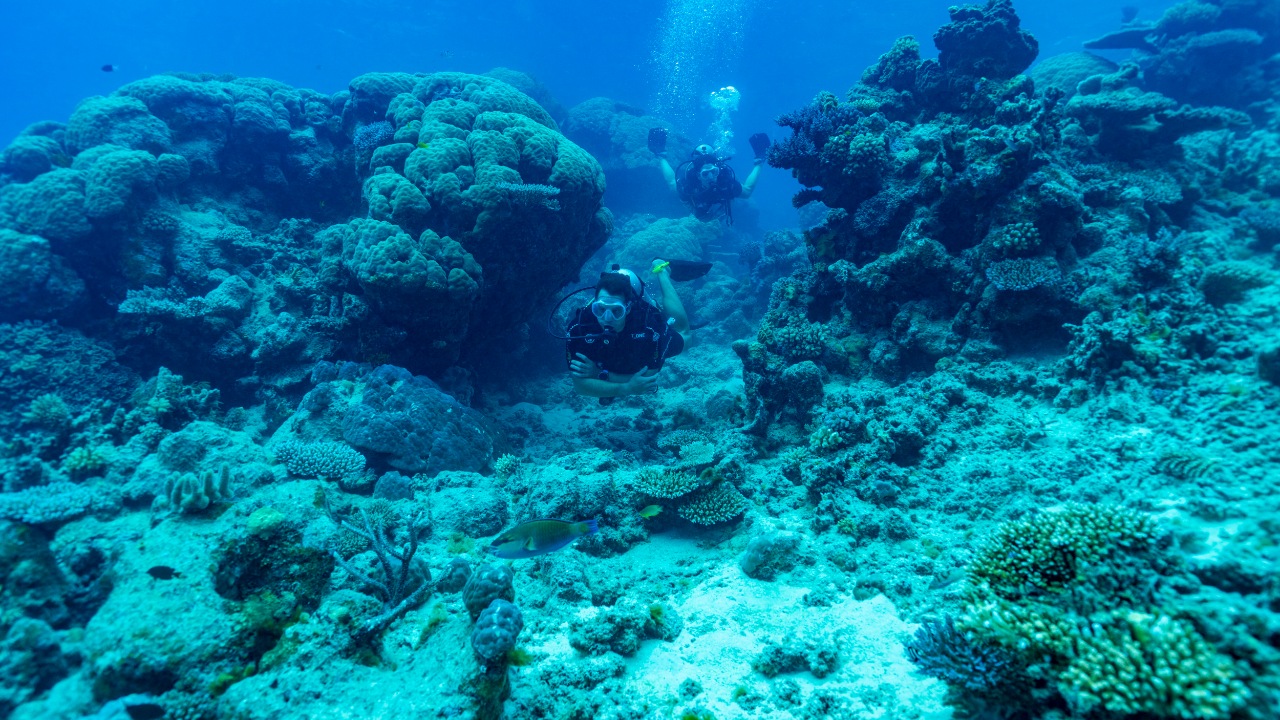
Having gained a slightly more in-depth look at both the Daintree Rainforest and the Great Barrier Reef, it feels only right to balance that out with a scenic helicopter ride organised by Nautilus Aviation. A silver Airbus H130 takes me on a smooth circuit over the flourishing treetops of the Barron Gorge National Park, along the meanders of the Barron River, and then out to the Reef itself, which, even on an overcast day, shimmers like a jewel. Flying between the Rainforest and the Reef—the only place on earth where two UNESCO World Heritage sites exist side by side—isn’t the kind of rest and relaxation most people are used to, but it certainly will take your breath away.
For more information, please visit the Tourism Australia website.
Photography credits: Tourism and Events Queensland
